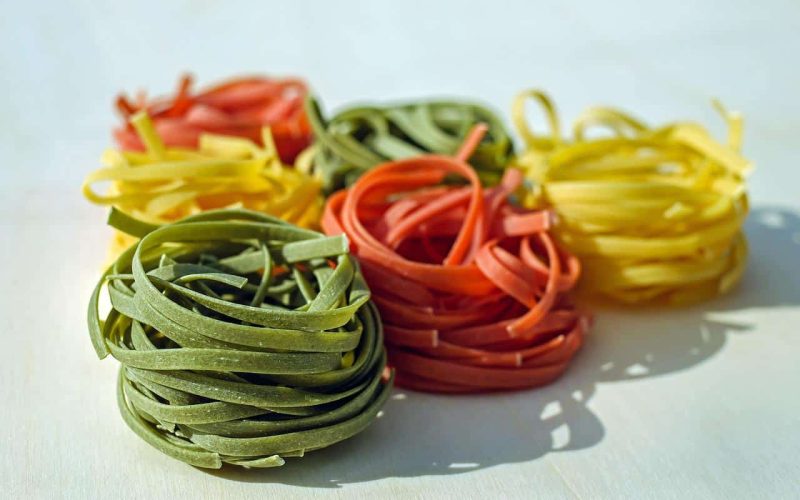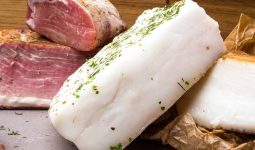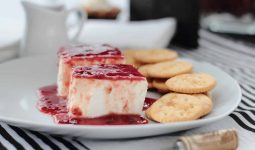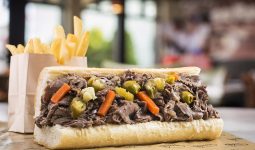Purple food coloring is one of the most difficult colors to create naturally.
Many artificial purple food colorings are available, especially the dye in Skittles and Grape Nuts, which contains Red 40, which has been linked to hyperactivity in children.
Luckily, with a few simple ingredients, you can create your own natural purple food coloring at home!
Best of all, you can easily tweak the amounts used to achieve any shade of purple you want!
Just follow these instructions on how to make purple food coloring. You’ll be making natural purple food coloring in no time!
Kinds of Food Coloring
Artificial food colorings are made from synthetic dyes and can be found in various foods. While these dyes are generally safe, some people may be sensitive.
Natural food colorings are made from plant or animal extracts and are more expensive than synthetic dyes.
However, many people prefer natural food colorings because they are more gentle on the body.
How to Make Purple Food Coloring?
Here is a simple recipe for coloring purple food. Other types of food coloring with different characteristics may work better, depending on your needs.
Liquid Food Coloring
The liquid type works best when you want to dye an entire cake or large amounts of icing at once since it covers well and doesn’t stain your hands as powdered colors do.
Add a few drops at a time until you get the desired shade of purple that you want.
Liquid colors also work well if you add them to something like fruit punch, where a powder might settle at the bottom of the glass and not dissolve as quickly as desired.
Liquid Gel Dye
The gel kind is perfect for decorating small items like cupcakes or individual portions of baked goods like cookies.
It’s less messy than other varieties and comes in a squeeze bottle, making it easy to use.
Dissolve one package of gel dye into one cup of boiling water, then add two tablespoons of vinegar to help keep the liquid from being too sticky.
Stir thoroughly before adding it to your baking project. A little goes a long way, so add just one drop.
Then, gradually add more until you reach the desired intensity of the purple coloring.
Gel Paste Dye
If you’re looking for a stronger hue of purple, gel paste dye is perfect. You can buy it premixed in tubes.
You can also make your own by combining 1/2 teaspoon of food coloring with one tablespoon of corn syrup.
Apply the paste to your choice of surface using a brush or toothpick, let dry, and remove any extra pigment using tape.
Natural Food Coloring
When naturally learning to make purple food coloring, all you need is fruit.
Using Red cabbage as a Natural Dye
Red cabbage! Combine three cups of white wine vinegar with two cups of water and stir in about two pounds of thinly shredded cabbage.
Bring the mixture to a boil over medium-high heat and cook for about 30 minutes or until the cabbage has softened.
Then, strain the solids using cheesecloth or a colander lined with paper towels, saving the liquid that seeps through.
Cool to room temperature before storing in the refrigerator for up to three weeks.
It should last much longer, but I haven’t had mine around long enough to test.
Using blueberries as Natural Dye
For a natural purple food coloring, you can use blueberries! Here’s how:
- Start by boiling some water. You’ll need about 1 cup water for every 1-2 cups of blueberries.
- Pour the boiling water over the blueberries in a heat-safe bowl or pot. Let the mixture sit for about 15 minutes, stirring occasionally.
- Once the desired color is achieved, strain the mixture through a cheesecloth or fine mesh strainer to remove the solids. For best results, use the purple dye immediately or store it in a glass jar in the fridge for up to a week.
Using Purple Cabbage as a Natural Dye
Have you ever wondered how those beautiful, vibrant shades of purple in your favorite baked goods are achieved? If you’re looking to avoid food dyes, the good news is that it’s easy to make your own natural purple food coloring at home with purple Cabbage; here is how:
Cut a small cabbage from the middle and place it into a pot. Fill the pot with water until all of the cabbage is submerged.
Cook for about 15 minutes. Allow to cool. Strain and transfer the liquid into a container. Freeze for about 12 hours. Use as needed!
Why Use Natural Ingredients?
Having learned how to make purple food coloring naturally, I can tell you that one of the great things about natural ingredients is that they offer a wide range of colors.
Plus, they’re typically free of synthetic dyes and chemicals, which can harm your health.
To make your own natural purple food coloring, you must combine two colors—red and blue—to achieve the desired hue.
Note that the longer you leave the mixture sitting, the darker it will become as the dye oxidizes. You’ll have more than enough purple dye for all your culinary creations!
Conclusion
Who knew making purple food coloring at home was so easy? All you need is a few ingredients. Voila! You now have beautiful, all-natural purple food coloring that you can use in various recipes.








